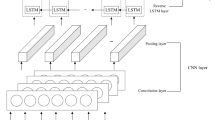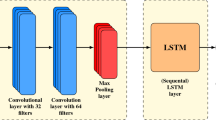Abstract
In financial research, accurately predicting the movement trends of stock prices has been a focus for many researchers. The interrelationships among stocks are important factors that influence stock prices. However, recent research has revealed several limitations of traditional deep learning models in capturing these interrelationships, including the inability to learn higher-order relationships among stocks, the inability to dynamically update the relationship graph, and the failure to model the impact of industry relationships on individual stocks. To address these limitations, we propose an industry relationship-driven hypergraph attention network (IRD-HGAT) for predicting stock price movement trends. A key aspect of our work is the use of a hypergraph structure to represent the higher-order relationships among stock industries. The hypergraph attention mechanism is used to dynamically update the relationships between stocks, and the properties of industry hyperedges are aggregated to analyze the impact of industry relationships on stock prices. By comparing the current state-of-the-art algorithms, IRD-HGAT achieves excellent predictive performance and profitability on both S &P500 and CSi500 datasets, with AUC and Sharpe ratios of 0.87 and 1.12, respectively. Ablation experiments and parameter sensitivity analyses also further validate the validity and predictive stability of the model components.











Similar content being viewed by others
Availability of data and materials
In the experiments, the CSI 500 data is obtained through the open-source platform baostock (https://www.baostock.com), and the S &P 500 data is obtained through the open-source platform yfinance (https://github.com/ranaroussi/yfinance).
References
Preethi G, Santhi B (2012) Stock market forecasting techniques: a survey. J Theor Appl Inf Technol 46(1):24–30
Adam K, Marcet A, Nicolini JP (2016) Stock market volatility and learning. J Financ 71(1):33–82
Cavalcante RC, Brasileiro RC, Souza VL, Nobrega JP, Oliveira AL (2016) Computational intelligence and financial markets: a survey and future directions. Expert Syst Appl 55:194–211
Jeanblanc M, Yor M, Chesney M (2010) Mathematical methods for financial markets. Finance
He K, Zhang, X, Ren S, Sun J: Deep residual learning for image recognition. In: Proceedings of the IEEE conference on computer vision and pattern recognition. pp 770–778 (2016)
Piczak KJ (2015) Environmental sound classification with convolutional neural networks. In: 2015 IEEE 25th International workshop on machine learning for signal processing (MLSP). IEEE, pp 1–6
Kenton JDM-WC, Toutanova, LK (2019) Bert: pre-training of deep bidirectional transformers for language understanding. In: Proceedings of naacL-HLT. pp 4171–4186
Li Q, Chen Y, Wang J, Chen Y, Chen H (2017) Web media and stock markets: a survey and future directions from a big data perspective. IEEE Trans Knowl Data Eng 30(2):381–399
Zhang L, Aggarwal C, Qi G-J(2017) Stock price prediction via discovering multi-frequency trading patterns. In: Proceedings of the 23rd ACM SIGKDD international conference on knowledge discovery and data mining. pp 2141–2149
Ali U, Hirshleifer D (2020) Shared analyst coverage: unifying momentum spillover effects. J Financ Econ 136(3):649–675
Livingston M (1977) Industry movements of common stocks. J Financ 32(3):861–874
Li W, Bao R, Harimoto K, Chen D, Xu J, Su Q (2020) Modeling the stock relation with graph network for overnight stock movement prediction. IJCAI 20:4541–4547
Zhang Y, Xiong Y, Kong X, Zhu Y (2017) Learning node embeddings in interaction graphs. In: Proceedings of the 2017 ACM on conference on information and knowledge management. pp 397–406
Hamilton W, Ying Z, Leskovec J (2017) Inductive representation learning on large graphs. Adv Neural Inf Process Syst 30
Zhang X, Zhang Y, Wang S, Yao Y, Fang B, Philip SY (2018) Improving stock market prediction via heterogeneous information fusion. Knowl-Based Syst 143:236–247
Goller C, Kuchler A (1996) Learning task-dependent distributed representations by backpropagation through structure. In: Proceedings of international conference on neural networks (ICNN’96), vol 1 IEEE, pp 347–352
Yan R, Song Y, Wu H (2016) Learning to respond with deep neural networks for retrieval-based human-computer conversation system. In: Proceedings of the 39th international ACM SIGIR conference on research and development in information retrieval. pp 55–64
Hidasi B, Karatzoglou A (2018) Recurrent neural networks with top-k gains for session-based recommendations. In: Proceedings of the 27th ACM international conference on information and knowledge management. pp 843–852
Srivastava N, Mansimov E, Salakhudinov R (2015). Unsupervised learning of video representations using lstms. In: International conference on machine learning. PMLR, pp 843–852
Hochreiter S, Schmidhuber J (1997) Long short-term memory. Neural Comput 9(8):1735–1780
Jozefowicz R, Zaremba W, Sutskever I (2015) An empirical exploration of recurrent network architectures. In: International conference on machine learning. PMLR, pp 2342–2350
Nobi A, Maeng SE, Ha GG, Lee JW (2014) Effects of global financial crisis on network structure in a local stock market. Phys A 407:135–143
Sawhney R, Agarwal S, Wadhwa A, Shah R (2020) Deep attentive learning for stock movement prediction from social media text and company correlations. In: Proceedings of the 2020 conference on empirical methods in natural language processing (EMNLP). pp 8415–8426
Zhisheng LI, Jin L, Zhang Z (2019) Direct government intervention and systemic tail risk: evidence from the national team stock rescue during the 2015 crash. Econ Res J
Ming F, Wong F, Liu Z, Chiang M (2014) Stock market prediction from wsj: text mining via sparse matrix factorization. In: 2014 IEEE international conference on data mining. IEEE, pp 430–439
Ma T, Tan Y (2022) Stock ranking with multi-task learning. Expert Syst Appl 199:116886
Aggarwal CC, Reddy C (2013) Data clustering: algorithms and applications. Chapman & Hall/CRC
Mei T, Rui Y, Li S, Tian Q (2014) Multimedia search reranking: a literature survey. ACM Computing Surveys (CSUR) 46(3):1–38
Krizhevsky A, Sutskever I, Hinton GE (2012) Imagenet classification with deep convolutional neural networks. Adv Neural Inf Process Syst 25
Feng F, Nie L, Wang X, Hong R, Chua T-S (2017) Computational social indicators: a case study of chinese university ranking. In: Proceedings of the 40th international ACM SIGIR conference on research and development in information retrieval. pp 455–464
Jiang S, Hu Y, Kang C, Daly Jr T, Yin D, Chang Y, Zhai C (2016) Learning query and document relevance from a web-scale click graph. In: Proceedings of the 39th international ACM SIGIR conference on research and development in information retrieval. pp 185–194
Kipf TN, Welling M: Semi-supervised classification with graph convolutional networks. In: International conference on learning representations
Chen Y, Wei Z, Huang X (2018) Incorporating corporation relationship via graph convolutional neural networks for stock price prediction. In: Proceedings of the 27th ACM international conference on information and knowledge management. pp 1655–1658
HsuY-L, TsaiY-C, Li C-T (2021) Fingat: financial graph attention networks for recommending top-\(k\) k profitable stocks. IEEE Trans Knowl Data Eng 35(1):469–481
Feng F, He X, Wang X, Luo C, Liu Y, Chua T-S (2019) Temporal relational ranking for stock prediction. ACM Trans Inform Sys 37(2):1–30
Liu Y, Zhang Q, Chu T (2022) Stock index prediction based on multi-time scale learning with multi-graph attention networks. Appl Intell 53(12):16263–16274
Cheng R, Li Q (2021) Modeling the momentum spillover effect for stock prediction via attribute-driven graph attention networks. Proc AAAI Conf Artif Intell 35:55–62
Sawhney R, Agarwal S, Wadhwa A, Shah RR (2020) Spatiotemporal hypergraph convolution network for stock movement forecasting. In: 2020 IEEE International conference on data mining (ICDM). IEEE, pp 482–491
Sawhney R, Agarwal S, Wadhwa A, Derr T, Shah RR (2021) Stock selection via spatiotemporal hypergraph attention network: a learning to rank approach. Proc AAAI Conf Artif Intell 35:497–504
Yang X, Liu W, Zhou D, Bian J, Liu T-Y (2020) Qlib: An ai-oriented quantitative investment platform. arXiv:2009.11189
Xu Y, Cohen SB (2018) Stock movement prediction from tweets and historical prices. In: Proceedings of the 56th annual meeting of the association for computational linguistics (vol 1: Long Papers). pp 1970–1979
Luo Y, Hu J, Wei X, Fang D, Shao H (2014) Stock trends prediction based on hypergraph modeling clustering algorithm. In: 2014 IEEE international conference on progress in informatics and computing. IEEE pp 27–31
Feng Y, You H, Zhang Z, Ji R, Gao Y (2019) Hypergraph neural networks. Proc AAAI Conf Artif Intell 33:3558–3565
Zhou D, Huang J, Schölkopf B (2006) Learning with hypergraphs: Clustering, classification, and embedding. Adv Neural Inf Process Syst 19
Yadati N, Nimishakavi M, Yadav P, Nitin V, Louis A, Talukdar P (2019) Hypergcn: a new method for training graph convolutional networks on hypergraphs. Adv Neural Inf Process Syst 32
Bai S, Zhang F, Torr PH (2021) Hypergraph convolution and hypergraph attention. Pattern Recogn 110:107637
Maas AL, Hannun AY, Ng AY etal (2013) Rectifier nonlinearities improve neural network acoustic models. In: Proc. Icml, vol. 30. Citeseer, p 3
Vaswani A, Shazeer N, Parmar N, Uszkoreit J, Jones L, Gomez AN, Kaiser Ł, Polosukhin I (2017) Attention is all you need. Adv Neural Inf Process Syst 30
Glorot X, Bengio Y: Understanding the difficulty of training deep feedforward neural networks. In: Proceedings of the thirteenth international conference on artificial intelligence and statistics. JMLR Workshop and Conference Proceedings, pp 249–256 (2010)
Luo L, Xiong Y, Liu Y, Sun X: Adaptive gradient methods with dynamic bound of learning rate. In: International conference on learning representations
Veličković P, Cucurull G, Casanova A, Romero A, Liò P, Bengio Y: Graph attention networks. In: International conference on learning representations
Ding Q, Wu S, Sun H, Guo J, Guo J (2020) Hierarchical multi-scale gaussian transformer for stock movement prediction. In: IJCAI. pp 4640–4646
Acknowledgements
This work was supported by the Natural Science Foundation of Guangdong Province (No. 2020A1515011208) and the Science and Technology Program Foundation of Guangzhou (No. 202102080353).
Author information
Authors and Affiliations
Corresponding author
Ethics declarations
Conflicts of interest
The authors have declared no conflict of interest.
Additional information
Publisher's Note
Springer Nature remains neutral with regard to jurisdictional claims in published maps and institutional affiliations.
Rights and permissions
Springer Nature or its licensor (e.g. a society or other partner) holds exclusive rights to this article under a publishing agreement with the author(s) or other rightsholder(s); author self-archiving of the accepted manuscript version of this article is solely governed by the terms of such publishing agreement and applicable law.
About this article
Cite this article
Han, H., Xie, L., Chen, S. et al. Stock trend prediction based on industry relationships driven hypergraph attention networks. Appl Intell 53, 29448–29464 (2023). https://doi.org/10.1007/s10489-023-05035-z
Accepted:
Published:
Issue Date:
DOI: https://doi.org/10.1007/s10489-023-05035-z




